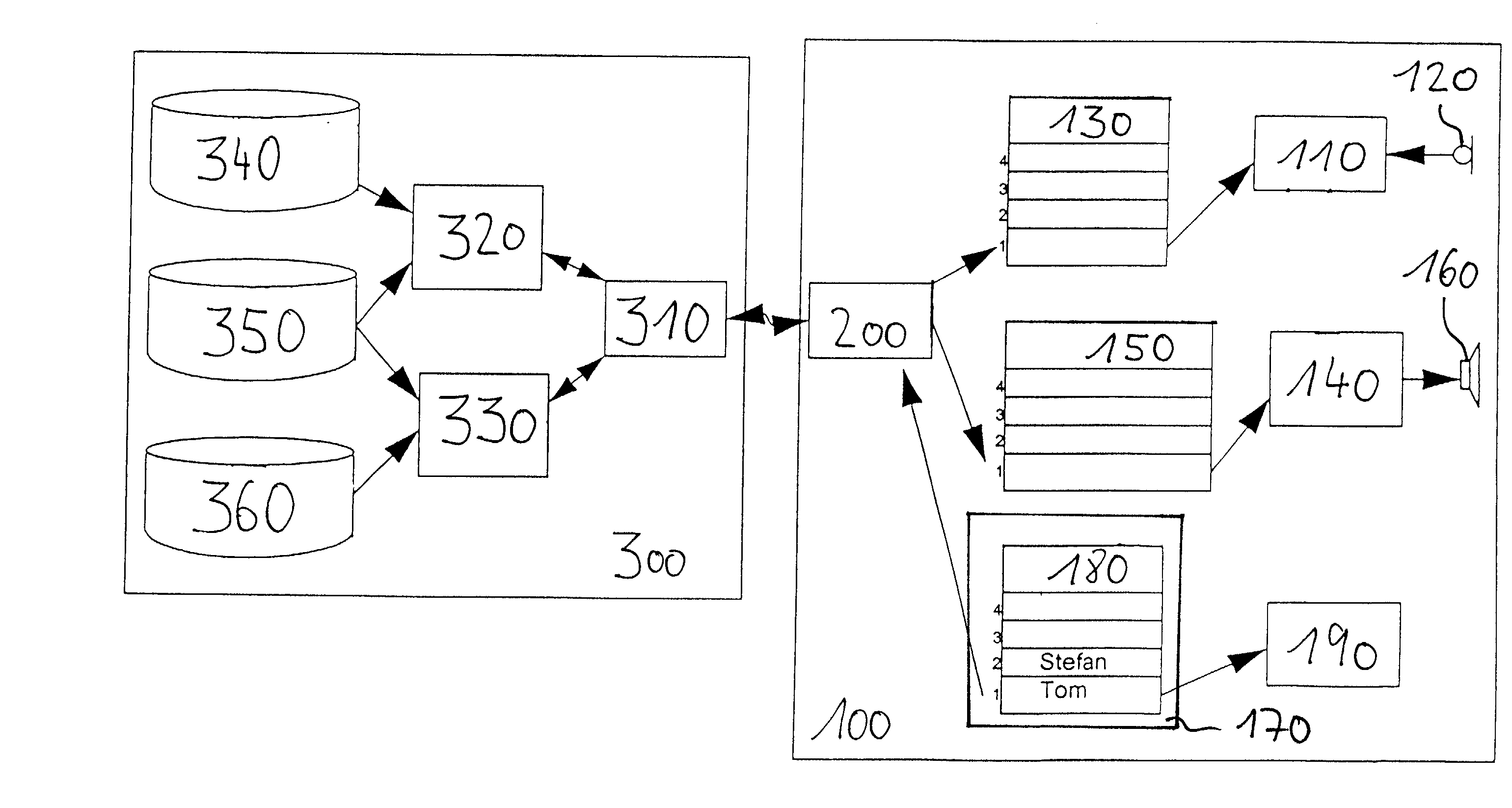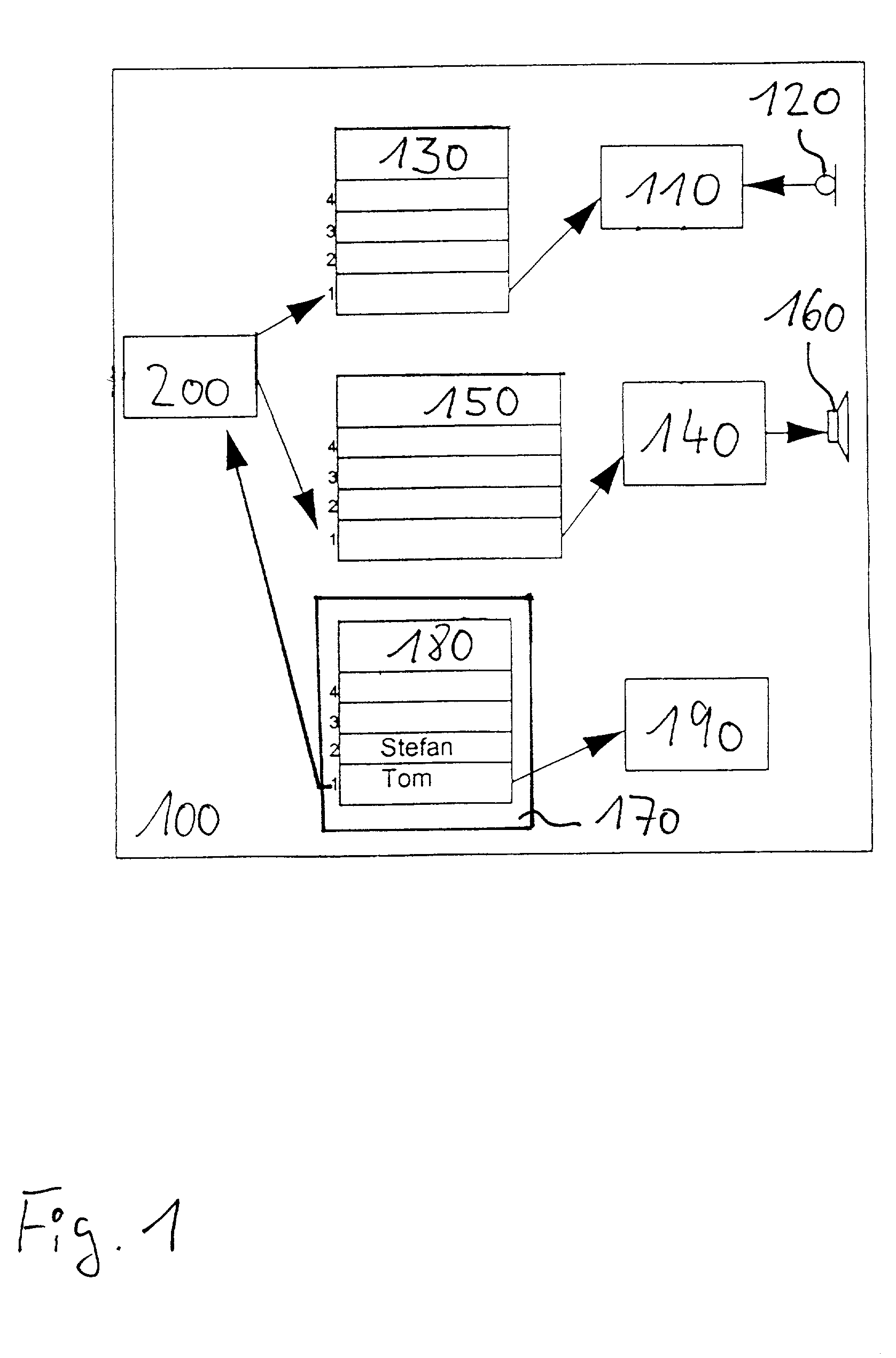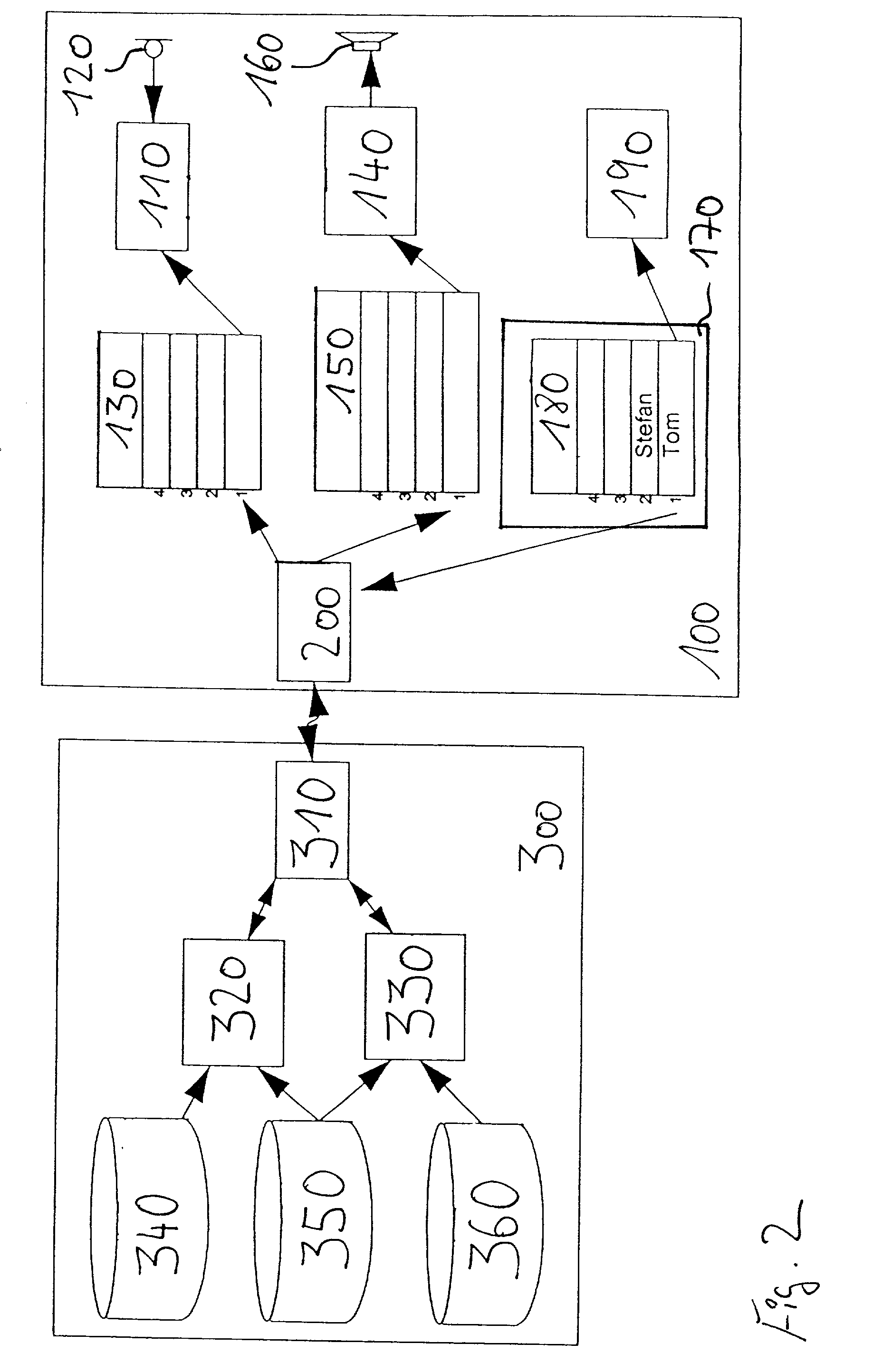Mobile terminal controllable by spoken utterances
a mobile terminal and voice recognition technology, applied in the field of automatic speech recognition, can solve the problems of time-consuming and cumbersome mobile terminal training process, inability to accurately predict the speech of speakers, and inability to meet user needs,
- Summary
- Abstract
- Description
- Claims
- Application Information
AI Technical Summary
Benefits of technology
Problems solved by technology
Method used
Image
Examples
first embodiment
[0037] In FIG. 1 a schematic diagram of a mobile terminal in the form of a mobile telephone 100 with voice dialing functionality according to the invention is illustrated.
[0038] The mobile telephone 100 comprises an automatic speech recognizer 110 which receives a signal corresponding to a spoken utterance of a user from a microphone 120. The automatic speech recognizer 110 is further in communication with a database 130 which contains all acoustic models to be compared for automatic speech recognition by the automatic speech recognizer 110 with the spoken utterances received via the microphone 120.
[0039] The mobile telephone 100 additionally comprises a component 140 for generating an acoustic feedback for a recognized spoken utterance. The component 140 for outputting the acoustic feedback is in communication with a voice prompt database 150 for storing voice prompts. The component 140 generates an acoustic feedback based on voice prompts contained in the database 150. The compone...
second embodiment
[0068] In FIG. 3, a mobile telephone 100 according to the invention is illustrated. The mobile telephone 100 depicted in FIG. 3 has a similar construction like the mobile telephone 100 depicted in FIG. 1. Again, the mobile telephone 100 comprises an interface 200 for communicating with a network server.
[0069] In contrast to the mobile telephone 100 depicted in FIG. 1, however, the mobile telephone 100 depicted in FIG. 3 further comprises a training unit 400 in communication with both the automatic speech recognizer 110 and the database 130 for acoustic models. Moreover, the mobile telephone 100 of FIG. 3 comprises a coding unit 410 in communication with both the microphone 120 and the database 150 for voice prompts and a decoding unit 420 in communication with both the database 150 for voice prompts and the component 140 for generating an acoustic feedback.
[0070] The training unit 400 and the coding unit 410 of the mobile telephone 100 depicted in FIG. 3 are controlled by a central ...
third embodiment
[0086] a network server 300 according to the invention is depicted in FIG. 5. The network server 300 depicted in FIG. 5 allows name dialing even with telephones which have no name dialing capability. Hereinafter, such a type of telephone is called POTS (Plain Old Telephone System). With such a POTS telephone, the user simply dials into the network server 300 via the interface 310. The connection between the POTS telephone and the network server 300 may be a wired or a wireless connection.
[0087] The network server 300 depicted in FIG. 4 comprises three databases 370, 380, 390 with the same functionality as the corresponding databases of the network server 300 depicted in FIG. 4. The network server 300 of FIG. 5 further comprises an automatic speech recognizer 500 in communication with both the interface 310 and the database 370 for acoustic models and a speech output system 510 in communication with the database 380 for voice prompts. The databases 370 and 380 of the network server 3...
PUM
 Login to View More
Login to View More Abstract
Description
Claims
Application Information
 Login to View More
Login to View More - R&D
- Intellectual Property
- Life Sciences
- Materials
- Tech Scout
- Unparalleled Data Quality
- Higher Quality Content
- 60% Fewer Hallucinations
Browse by: Latest US Patents, China's latest patents, Technical Efficacy Thesaurus, Application Domain, Technology Topic, Popular Technical Reports.
© 2025 PatSnap. All rights reserved.Legal|Privacy policy|Modern Slavery Act Transparency Statement|Sitemap|About US| Contact US: help@patsnap.com



